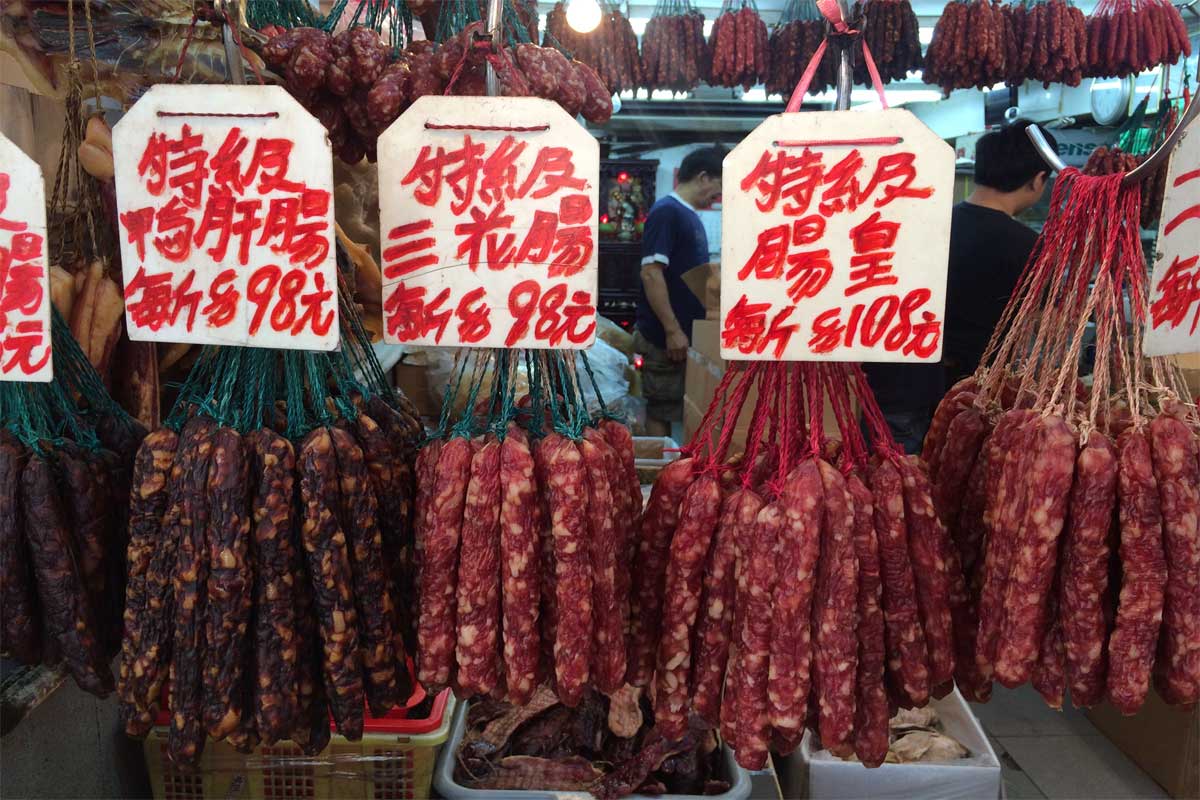Smoking of oily foods over a wood fire or smoking wood slivers has a preserving effect. The smoke impairs a specific smoky taste, but also kills bacteria and prevents them from growing. Warm smoking takes place when the food item is closer to the fire and is able to warm up. In cold smoking the food item is kept away from the heat source and only the smoke preserves. Examples are smoked fish, such as cold smoked salmon, smoked meat and smoked nuts.
With fish and meat, virtually always a light brining step precedes the smoking. The salt helps to tenderize the meat and also has a preserving function. Longer cold smoking times usually cause the food to be storage stable for a longer period. Great examples are the smoked eels, mackerels, herrings and salmon in North Western Europe. But also the smoked meats (bacon, pork sausages, duck) that villages in China still produce, despite the penetration of more refrigerators.
Nowadays meat from the barbecue has become more popular. The ones using coal or charcoal with wood slivers do also impair a smokey taste to the meat. This is widely appreciated.
In the Middle-East roasting of nuts takes place in conjunction with smoking.



